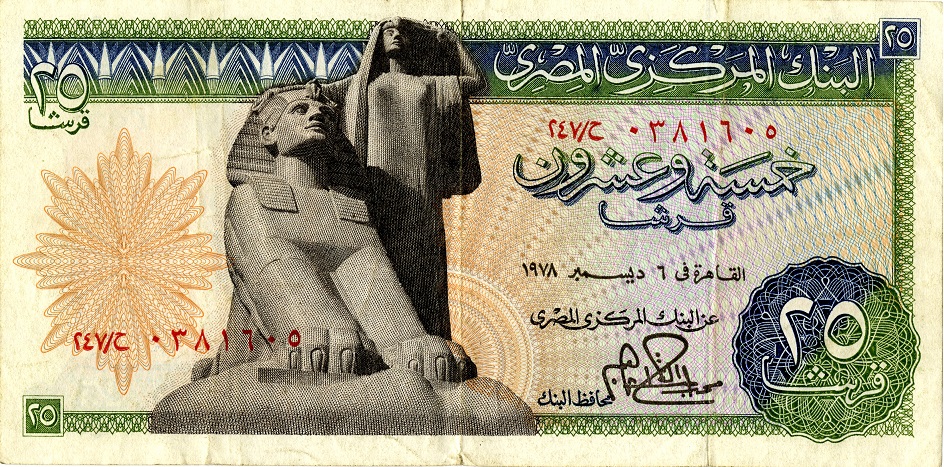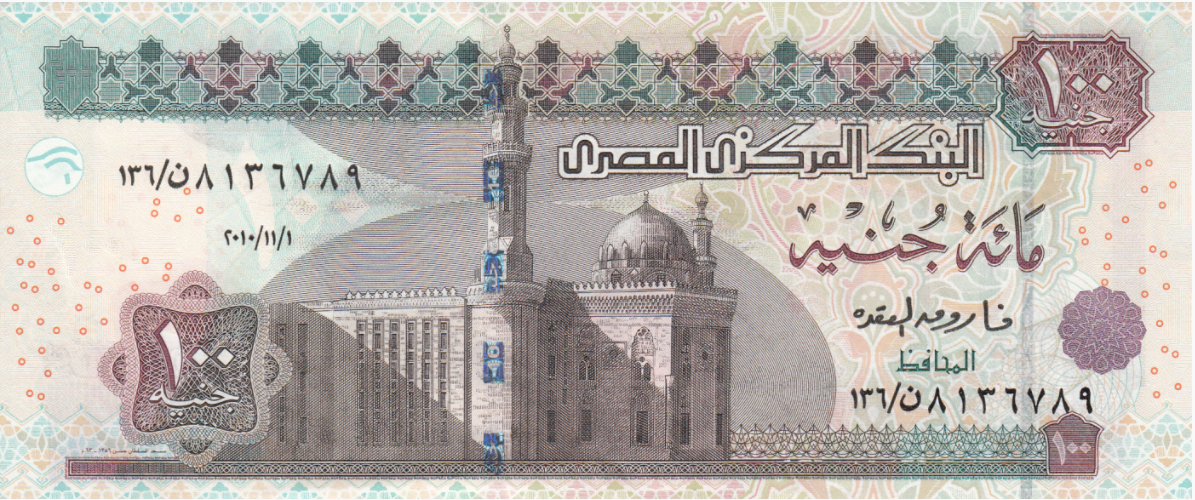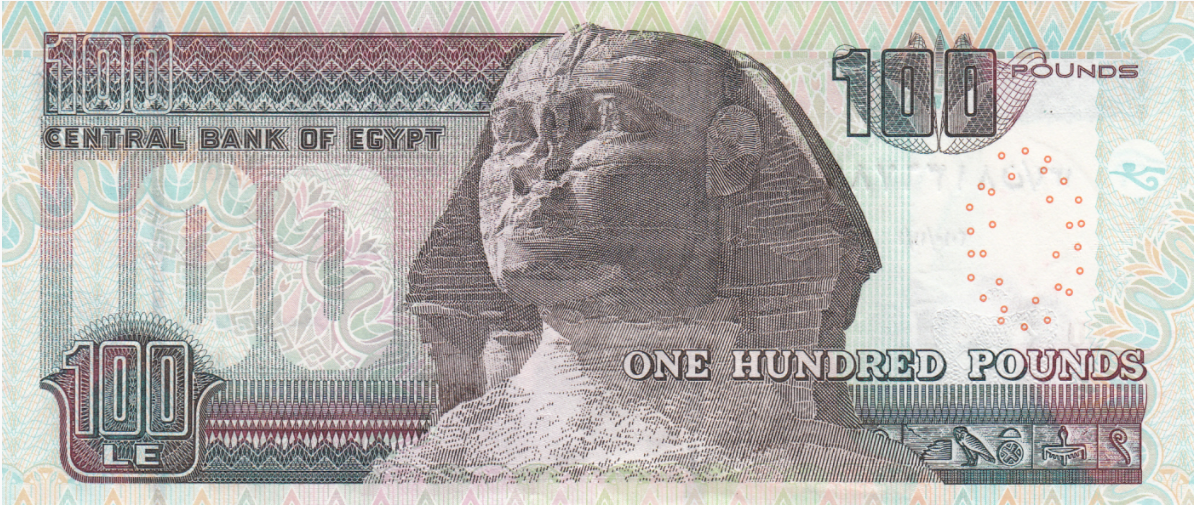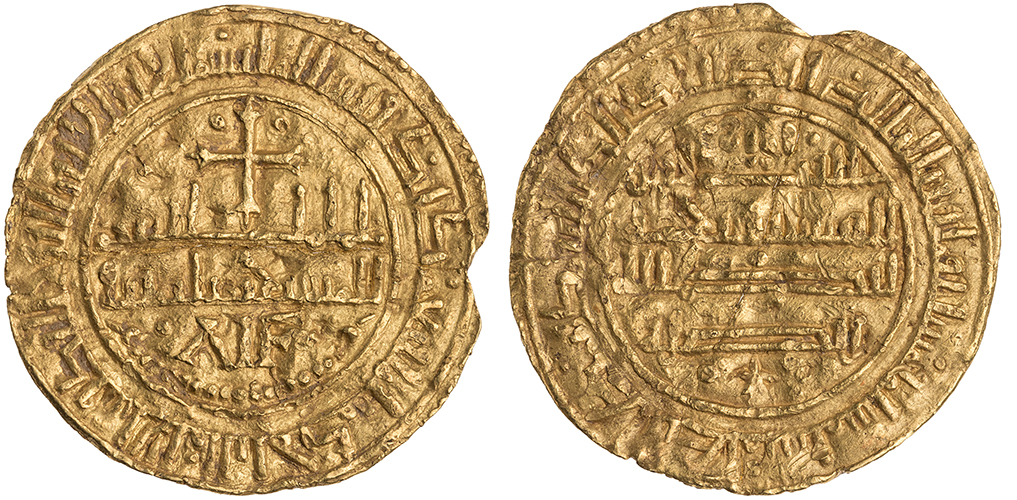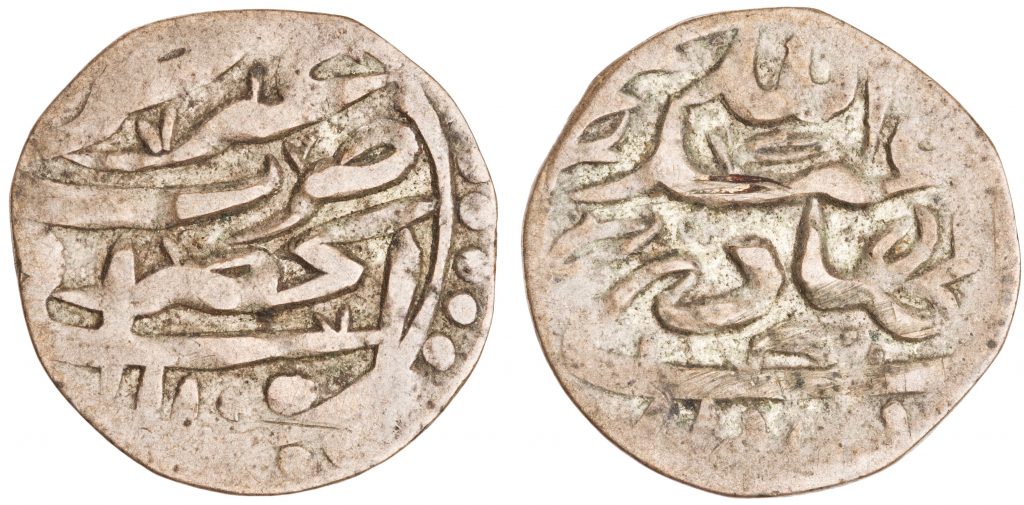Mahmoud Mukhtar’s Egypt’s Reawakening As Seen on a Banknote
The history of images depicted on Arab banknotes is a study of visualizing modern nationalism. Egypt, for instance, issued its first banknotes on April 3, 1899 while it was still under British occupation (1882–1952). Over the course of the twentieth century to date, Egyptian banknotes showed images either of famous Egyptian mosques or of Pharaonic sculptures. The 2010 Egyptian Banknote is emblematic of this combination of a religious landmark and antiquity. On one side, the note depicts the mosque complex of Sultan Hasan, and on the other it shows Great Sphinx of Giza built during the Old Kingdom. The ANS also has several earlier examples of related paper currency (2011.47.6). While Egypt continued to modernize, its Islamic and Pharaonic histories not only animated the nation’s landscapes, but also defined its identity.

Mahmoud Mukhtar’s Egypt’s Reawakening (Nahḍat Miṣr) is an especially rare image of a work of art found on a modern Arab banknote. According to art historian Alex Dika Seggerman’s research, Mukhtar (1891–1934) first sculpted a model of Egypt’s Reawakening in 1920 as a commemorative work for the landmark 1919 revolution of Egypt. Mukhtar made the model in Paris for the 1920 Salon of French Artists. Egyptian students visiting Paris were moved by its symbolism and came back to Cairo to campaign for its large-scale public commission. The sculpture made of locally sourced granite was eventually installed outside of Cairo’s main train station in 1928, and subsequently moved outside of Cairo University in 1955.
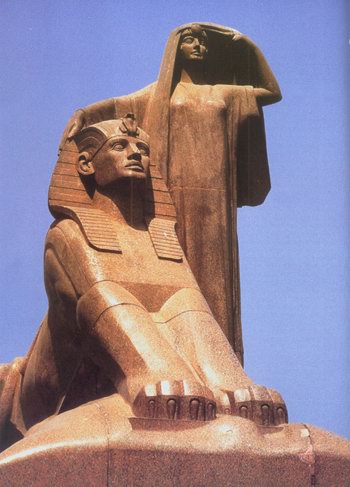
In Egypt’s Reawakening a strong Egyptian peasant woman (fallāḥa) opens her veil to listen to the cries and hopes of the Egyptian public.[1] With her steady hand she—the woman as nation—is connected to the symbolic historical artifact. This uplifting image of strength appeared on the 25-piastre (qirsh) banknote that had a short-lived issue from 1967 to 1976. The first issue of this currency (1967–1969) also featured a 50-piastres note with the al-Azhar mosque on one side and a statue of Ramses II on the other, consistent with the mosque/Pharaonic combination that dominates most of Egyptian currency.
While the gesture to Mukhtar’s nationalist sculpture on an Egyptian banknote may be seen as remarkable, its Pharaonic imagery assimilates it into the broader canon of designs for paper money. Although the depictions of Ramses II or the Great Sphinx are of great ancient sculptures, they are mediated through their modern designs appearing on paper money codifying them as part of a nationalist vocabulary. Mukhtar’s sculpture materializes these forms with another layer of mediation by adding a reminder of the present, the peasant woman, and demonstrates how powerful imaginings can become a poignant national symbol when evoking the past as a vision for the future.
[1] For an erudite analysis of this sculpture see Seggerman 2014.
For further reading on Mukhtar see:
Seggerman, Alexandra Dika. 2014. “Mahmoud Mukhtar: ‘The first sculptor from the land of sculpture.” World Art 4:1, 27–46.
ibid. “Mahmoud Mokhtar.” Mathaf Encyclopedia of Modern Art and the Arab World.


